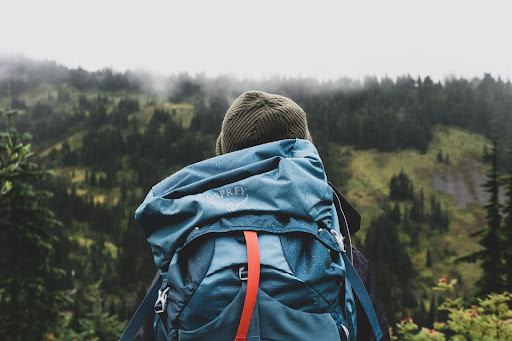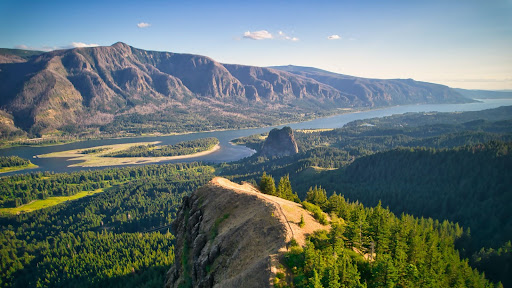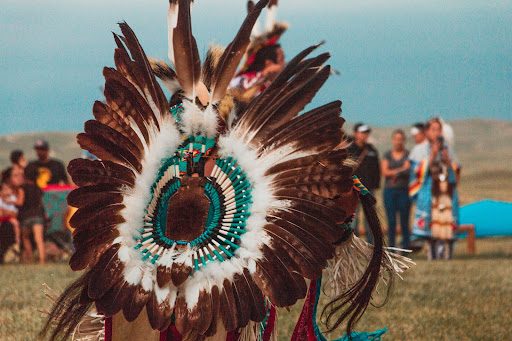Geotourism is a term that is floating around the tourism industry lately. However, it is a word that few are able to define. Despite this, geotourism is one of the most exciting movements in the tourism industry. You see, every decade the tourism industry sees a new trend arise that becomes a mainstay of travel culture. The 1950s began to see the rise of road trips in the United States. The 60s saw the trend of air travel gain popularity. The 70s saw a rise of cruise travel, and the 80s marked the introduction of all-inclusive package resorts. Even the 2010s saw people flocking to iconic lookouts to snap the perfect photo for social media.
So what is the next big travel trend? What style of travel is dominating the 2020s, and affecting the way a new generation of people explore the world? Most data and travel professionals will point you to the same answer; Geotourism.

What is Geotourism?
National Geographic defines geotourim as “tourism that sustains or enhances the geographic character of a place, its environment, culture, aesthetics, heritage, and the well-being of its residents.” This is realized by preserving the distinct character of each destination. The best way of doing this is by looking at the life of local residents. The places they are eating, playing, and shopping can all be used to better experience the essence of the destination.
Doing this allows overlooked destinations around the world to show what makes them worth visiting. It also allows residents of popular tourist destinations to bring tourists away from the main travel route. This also is bringing more money into the local community. This mix of economic, cultural, and environmental benefits creates a solution that can solve a lot of tourism’s biggest problems.

How does the Lewis and Clark National Historic Trail Promote Geotourism?
The Lewis and Clark National Historic Trail (LCNHT) is arguably one of the most comprehensive examples of a Geotourism mission in the United States. The trail follows the 1804-1806 route that took Lewis and Clark’s team from Pennsylvania to the Oregon Coast. It seeks to promote every town, tribal land, and natural wonder along the way. The trail requires collaboration between the National Park Service, public and private stakeholders of 16 states, and 15 tribal lands. Naturally, it is a daunting task to try to promote a common geotourism theme throughout a 4,900-mile trail. To combat this, the NPS teamed up with the tourism professionals at Solimar International, as well as the American Indian Alaska Native Tourism Association (AIANTA), and implemented the following promotional techniques:
1. Created the Interactive Lewis and Clark Travel Website
The Lewis and Clark Travel Website is an interactive resource curated by members of the Geotourism Stewardship Program. Overseen by the NPS, it brings together partners at local, state, and national levels to promote destinations along the trail. The main attraction of the website is the interactive map. This map can be used to find restaurants, lodging, museums, tours, events, and outdoor adventures to take part in. The website also features trip planning resources, a history of the trail, and any other logistical information you may need. It’s an incredible site that puts local attractions front and center, many of which were hand chosen by locals themselves.

2. Allowed the Public to Submit Listings to the Website
The NPS and other project collaborators knew that there was a lot of potential in the towns along the trail. However, they understood that having a full grasp of every single town was virtually impossible, and would require endless research. The solution to this was obvious: let the locals decide. The website allows local businesses and stakeholders to submit a popular hike, winery, park, or any other point of interest to the website. This allows for economic boosts to the city and its citizens but also gives tourists peace of mind that where they are going is a place enjoyed by tourists and locals alike. This adds to the authenticity that is at the heart of the geotourism mission.
3. Emphasize Small Businesses and Regional Attractions
As previously mentioned, the ability to submit a listing for your business on the Lewis and Clark Travel website is a great way to bring tourists from close and afar to explore a town and what it has to offer. The best part is that there is no business too small. Whether it is the local bookstore, a family-owned diner, or a young couple’s art studio, they all add to the character of the town. Because of this, they all enhance the geotourism mission. The focus is always on what makes the destination’s culture and heritage shine. Is the town historically known for its bourbon? Maybe it was the location of a thriving music scene in the 1970s? The site of a famous military battle? No matter the attraction, they all move the geotourism mission forward.

4. Put the Voices of Native Americans at the Forefront
There are two sides to every story, and the expedition of Lewis and Clark was no different. Many Native American stories and experiences of the expedition were previously not given the attention they deserved, nor was proper attention given to the unique culture and heritage of the reservations at large. To combat this, we wanted to make sure that Native American tourism organizations and businesses were given the main say on how to best promote their heritage and local points of interest. The trail crosses historic lands of over three dozen sovereign nations, and many of them have festivals, interpretive centers, memorials, museums, and restaurants that give insight into a culture and history that is the backbone of America and the Lewis and Clark Expedition.
All of these techniques create a great basis to promote the mission of geotourism. The Lewis and Clark Travel website will continue to grow, giving a space for any destination along the trail to showcase the spark that makes them a place worth visiting. However, it is not just the job of the tourism organizations to realize the mission of geotourism, as there is a lot that tourists can also do to make sure their travels along the trail embody the idea of geotourism.
How to Practice Geotourism throughout the Lewis and Clark National Historic Trail
As travelers, there is a duty to not just leave the destinations we travel to the same as when we arrived, but to leave them even better. Luckily, the Lewis and Clark Travel Website is the one-stop shop to find out how to make a difference. One step people who live along the route in the United States can take is to create a listing for a site along the trail, which can be done after creating an account. Also, tourists can practice some of these sustainable tourism practices to preserve the geographic character of the trail, as well as make sure their money is going to places that benefit the local community.
Your role as a tourist is to make sure that the spirit of geotourism is at the heart of all the choices you make. Whether it’s where you sleep, what you eat, where you shop, or what experiences you take part in. Because of this, you are guaranteed to have a deeper connection with the land you travel through, the towns you interact with, and the spirit of the people you meet.
